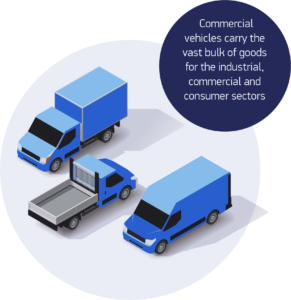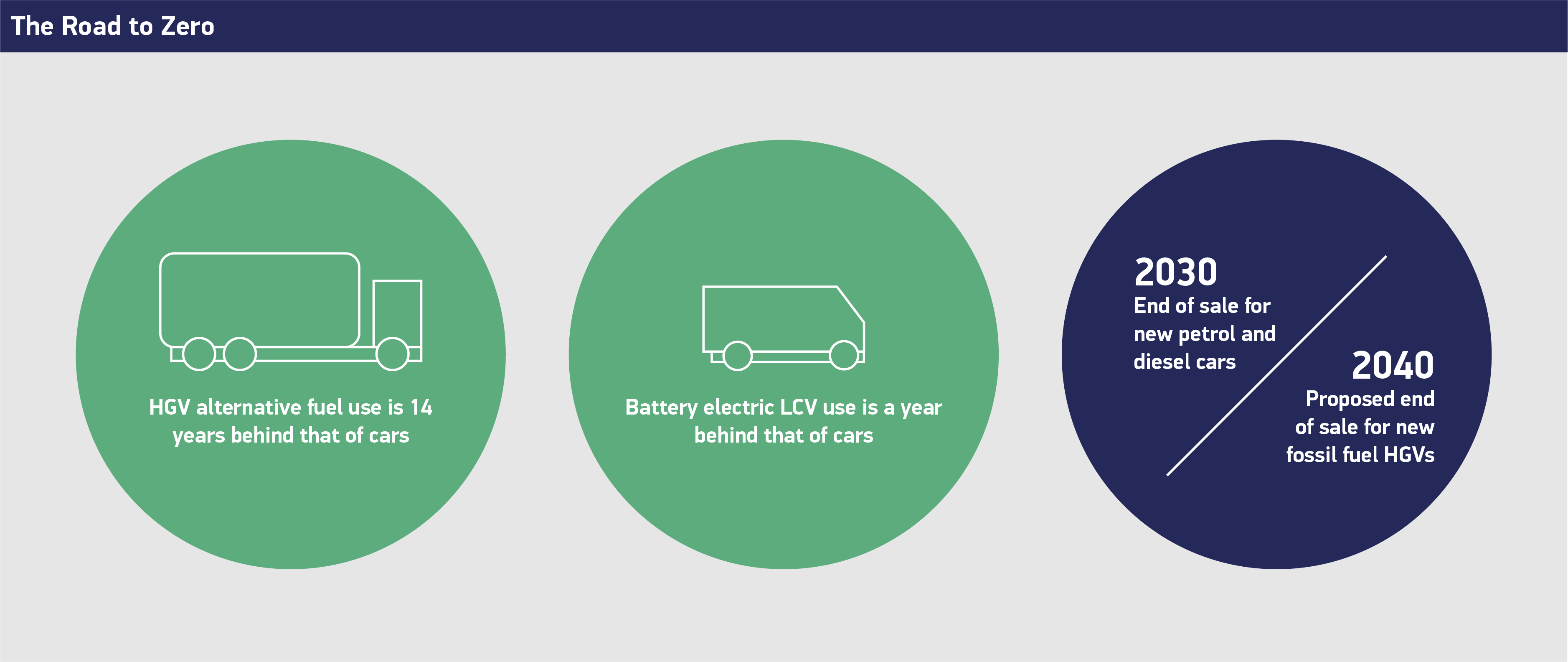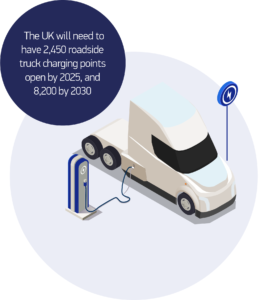 DOWNLOAD: Fuelling The Fleet: Delivering Commercial Vehicle Decarbonisation report
DOWNLOAD: Fuelling The Fleet: Delivering Commercial Vehicle Decarbonisation report
The commercial vehicle (CV) sector is the very lifeblood of the UK economy and an integral part of the UK automotive industry. Heavy goods vehicles (HGVs) and light commercial vehicles (LCVs) are fundamental to the operation of business and society, distributing goods and delivering services across the nation. Our reliance on CVs was brought into sharp relief during 2020, when the Covid-19 pandemic shut down conventional commerce, leading to a huge upsurge in online services with supermarkets alone reporting a doubling in home deliveries.
HGVs and LCVs are essential not just for retail but to the operation of all sectors including construction, quarrying, refuse collection, emergency service response, and breakdown assistance. Indeed the list of essential services that rely on HGVs and LCVs is diverse and vast. Additionally, these vehicles will often have ancillary equipment used for lifting or refrigeration, for example, which requires power in addition to, and often taken from, the powertrain. CVs are not purchased in the same way or for the same reasons as passenger cars. They are assets bought to provide particular functions and services.
 LCVs and HGVs make up 13.1% of the vehicles in use in Britain and covered 24% of all road miles travelled in 2020, but given their significant power requirements they account for around 35% of CO2 road transport emissions. Although today’s new CVs emit the lowest levels of carbon, manufacturers are committed to going even further, introducing alternative fuels, as well as electric and fuel cell technologies that will over time reduce tailpipe emissions from the fleet to zero. Unlike the car sector, however, there is no ‘silver bullet’ technology that is appropriate for all use cases and given the wide variety of applications, there may never be.
LCVs and HGVs make up 13.1% of the vehicles in use in Britain and covered 24% of all road miles travelled in 2020, but given their significant power requirements they account for around 35% of CO2 road transport emissions. Although today’s new CVs emit the lowest levels of carbon, manufacturers are committed to going even further, introducing alternative fuels, as well as electric and fuel cell technologies that will over time reduce tailpipe emissions from the fleet to zero. Unlike the car sector, however, there is no ‘silver bullet’ technology that is appropriate for all use cases and given the wide variety of applications, there may never be.

years for registrations – the figure is nearer one in 38.
Industry shares government’s ambition to achieve net zero by 2050 and recognises the need for a zero-emission CV sector to achieve this goal. UK automotive is preparing for the end of sale of new petrol and diesel cars and LCVs from 2030 and continues to develop and invest in zero emission technology for all vehicle types as well as consistently improving existing technologies to reduce emissions in the interim and provide greater fuel efficiency. The nature of CV businesses and the resulting unique requirements of CV operators, however, must be fully understood to ensure that the right solutions are developed that deliver a successful transition to full decarbonisation.
Fuelling The Fleet: Delivering Commercial Vehicle Decarbonisation report








